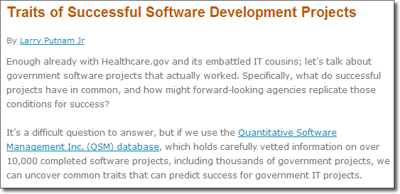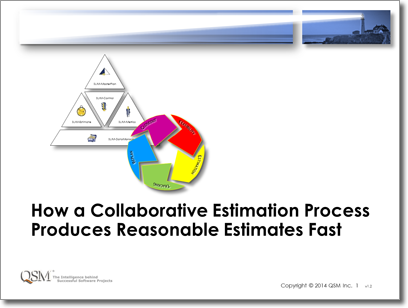 The laws of flight have many commonalities with the “physics” of software development. Whereas the principles of aerodynamics are essentially about thrust, drag, lift and weight, developing software has always been about the relationship between size (scope), effort (cost), duration (schedule) and the often overlooked measurement of quality (reliability).
The laws of flight have many commonalities with the “physics” of software development. Whereas the principles of aerodynamics are essentially about thrust, drag, lift and weight, developing software has always been about the relationship between size (scope), effort (cost), duration (schedule) and the often overlooked measurement of quality (reliability).
In aviation parlance the expression “flying by the seat of your pants” literally meant that you felt the plane through your “seat”. Early aircraft had limited navigational aids, mainly a rudimentary compass (which worked only when flying level) and a simple string to assess airflow relative to the plane’s fuselage. Pilots could determine the degree of an ascent or descent by G-force sensation, or assess airspeed by the severity of the aircraft’s vibrations. Until the invention of the gyroscope it was quite dangerous to fly without a virtual horizon – the centerpiece of a modern dashboard.
Early aeronauts plotted their routes using individual skill, celestial or fixed landmarks and their own real time perceptions rather than depending on mechanical tools. However, fog or low visibility would render the limited instruments they had useless, with the flight itself remaining as a risky endeavor. A successful trip meant you landed at your destination in one piece, but it was largely dependent upon the talent and judgment of the aviator, visibility and weather, and perhaps no small amount of luck.


 Television has done a fine job of glamorizing the job of an investigator. Whether you fancy the classic Sherlock Holmes, the affable Colombo, or even perhaps enjoy the suspense associated with cracking the case on television shows like “The First 48,” Hollywood has tried to make us believe the search for clues is always exciting. However, those who have searched thousand row spreadsheets for
Television has done a fine job of glamorizing the job of an investigator. Whether you fancy the classic Sherlock Holmes, the affable Colombo, or even perhaps enjoy the suspense associated with cracking the case on television shows like “The First 48,” Hollywood has tried to make us believe the search for clues is always exciting. However, those who have searched thousand row spreadsheets for  The laws of flight have many commonalities with the “physics” of software development. Whereas the principles of aerodynamics are essentially about thrust, drag, lift and weight, developing software has always been about the relationship between size (scope), effort (cost), duration (schedule) and the often overlooked
The laws of flight have many commonalities with the “physics” of software development. Whereas the principles of aerodynamics are essentially about thrust, drag, lift and weight, developing software has always been about the relationship between size (scope), effort (cost), duration (schedule) and the often overlooked  Dear Carol:
Dear Carol: 
 So, just why do we want to measure software productivity (without using the root word “productive” in the answer)? I believe that it comes down to the desire to numerically evaluate an inherently complex process so that quantitative comparisons can be made to provide a basis for decision making:
So, just why do we want to measure software productivity (without using the root word “productive” in the answer)? I believe that it comes down to the desire to numerically evaluate an inherently complex process so that quantitative comparisons can be made to provide a basis for decision making: Dear Carol:
Dear Carol: